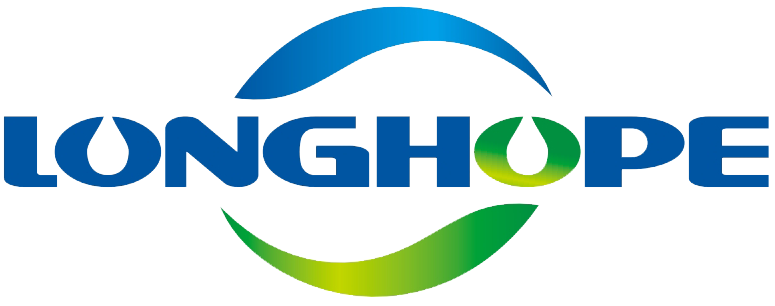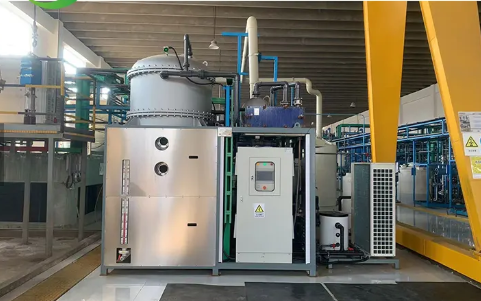Advanced Membrane Filtration Systems
Membrane Bioreactors (MBRs) for Efficient Contaminant Removal
Membrane Bioreactors (MBRs) are ingenious systems revolutionizing wastewater treatment by combining biological processes with membrane filtration. These systems enhance treatment processes by seamlessly integrating biological treatment with advanced filtration techniques to achieve high contaminant removal rates. MBRs utilize membranes directly for separating solids and microorganisms, resulting in excellent effluent quality without requiring large sedimentation tanks. They are employed in industrial settings, efficiently handling high concentrations of contaminants and producing reliable water sources for reuse. Studies have shown that MBR systems can reduce sludge production significantly and improve effluent quality, making them an ideal choice for industries aiming to reduce environmental footprints.
Nanofiltration Innovations for Heavy Metal Recovery
Nanofiltration technology plays a crucial role in treating industrial effluents containing heavy metals by selectively allowing certain ions to pass through while capturing unwanted contaminants. Recent innovations in nanofiltration membranes and processes have significantly enhanced the efficiency of recovering heavy metals from wastewater. For example, modern nanofiltration systems can achieve up to 90% recovery of heavy metals, offering substantial environmental benefits. Implementing nanofiltration not only aids in achieving sustainable treatment practices but also provides economic advantages by reducing the costs associated with metal contamination. This technology represents a sustainable solution for mitigating environmental impacts while reclaiming valuable resources from industrial wastewater effluents.
Thermal Hydrolysis Process (THP) for Organic Waste Breakdown
The Thermal Hydrolysis Process (THP) is a cutting-edge technology used for the efficient breakdown of organic waste. By subjecting waste materials to high temperatures and pressures, THP facilitates the decomposition of complex organic compounds into simpler substances, making it highly effective for organic waste treatment. Typically, this process operates at temperatures ranging from 150 to 200 degrees Celsius and under pressures between 200 to 800 psi, significantly enhancing the breakdown rate.
Real-world Applications underscore the effectiveness of THP. For instance, Cambi ASA, a leading provider of this technology, has documented significant reductions in waste volume and notable increases in biogas production at several facilities globally. This process not only reduces the amount of waste sent to landfills but also boosts the generation of renewable biogas. According to authoritative studies, plants implementing THP have experienced up to a 30% increase in biogas yield, reinforcing its role in sustainable waste management.
Biogas Generation from Industrial Sludge
Biogas generation from industrial sludge is increasingly recognized as a vital component of sustainable waste management practices. This process involves the anaerobic digestion of sludge to produce methane-rich biogas, which can be used as a renewable energy source. Technologies such as anaerobic digesters are employed to maximize biogas production, making use of digestion processes that convert organic material into biogas.
Various case studies highlight the potential of biogas generation from different types of industrial sludge. For example, a facility processing paper mill sludge reported biogas outputs sufficient to power its operations, showcasing the energy conversion potential of these systems. The biogas generated can be used to power facilities or generate electricity, providing a green alternative to fossil fuels. By integrating biogas systems, industries can reduce their reliance on conventional energy sources and contribute to a reduction in greenhouse gas emissions.
Electrochemical Treatment Technologies
Electrocoagulation for Heavy Metal Removal
Electrocoagulation (EC) is an innovative technology in the treatment of industrial wastewater, particularly for the removal of heavy metals. EC operates on the principle of generating coagulants in situ by dissolving sacrificial anodes, which then facilitate the aggregation and precipitation of pollutants like heavy metals. This method is highly effective, treating pollutants such as lead, copper, and nickel commonly found in industrial effluents. Research demonstrates that EC can achieve up to 99% removal efficiency for specific heavy metals across various industrial applications.
The key advantages of EC include its relatively low operational costs and its compliance with stringent environmental regulations. According to a study published in the Journal of Environmental Management, EC processes can significantly reduce the economic burden on treatment facilities due to their minimal reagent requirements and lower energy consumption. Furthermore, its capability to treat a wide range of contaminants makes it a versatile solution in the framework of sustainable wastewater management.
Electrooxidation of Persistent Organic Pollutants
Electrooxidation is another cutting-edge process employed to degrade persistent organic pollutants (POPs) in wastewater. This process utilizes anodic oxidation reactions to break down complex organic molecules into simpler, non-toxic substances. The success of electrooxidation lies in its ability to achieve high degradation rates, making it an ideal choice for treating stubborn pollutants like pharmaceuticals, pesticides, and industrial dyes.
The mechanism involves creating powerful oxidants such as hydroxyl radicals directly on the electrode surfaces, ensuring a complete mineralization of POPs. For example, studies have shown that electrooxidation achieves over 90% reduction of specific contaminants in textile industry effluents, highlighting its efficacy. This method not only supports regulatory compliance but also offers environmental benefits by reducing secondary pollution. Moreover, the use of electrooxidation aligns with the regulatory focus on mitigating harmful environmental impacts, thereby presenting itself as a forward-thinking choice in advanced wastewater treatment strategies.
AI-Driven Smart Waste Management Systems
IoT Sensors for Real-Time Effluent Monitoring
The integration of IoT sensor technology into waste management systems has revolutionized real-time effluent monitoring. These sensors enable industries to continuously track effluent quality, ensuring compliance with environmental regulations and allowing instant responses to unexpected changes. For example, the wastewater management sector's adoption of IoT sensors provides enhanced reliability through continuous data collection, which aids in timely problem-solving. Industries like chemical manufacturing and food processing have successfully implemented IoT monitoring, documenting improvements in waste treatment efficiency. Notably, smart monitoring systems contribute to significant cost savings and operational efficiencies by reducing manual monitoring costs and enhancing predictive maintenance capabilities.
Predictive Analytics for Process Optimization
Predictive analytics plays a crucial role in optimizing waste treatment processes by evaluating vast amounts of data to improve operational efficiency. Leveraging historical performance data, these analytics tools can predict potential system failures and enhance treatment outcomes, ultimately reducing resource consumption. Studies highlight notable reductions in energy and chemical use due to process optimization driven by predictive analytics. As AI technologies evolve, the waste management sector anticipates more robust analytics solutions focused on sustainability. This forward-looking trend suggests a transformative impact, fostering more resilient infrastructure and eco-friendly practices in waste management systems.
Advanced Oxidation Processes (AOPs)
UV/H2O2 Systems for Pharmaceutical Waste Degradation
Advanced Oxidation Processes (AOPs) play a crucial role in degrading pharmaceuticals present in wastewater, offering an innovative approach to reducing pollutants. Among the most effective methods within AOPs is the UV/H2O2 system. This system operates on the principle of using ultraviolet light in conjunction with hydrogen peroxide to generate hydroxyl radicals, which are highly reactive and capable of breaking down complex pharmaceutical compounds. Studies have revealed substantial degradation rates of pharmaceutical residues when utilizing UV/H2O2 systems, showcasing a profound capacity for removing harmful pollutants from water sources. These systems offer significant benefits, including better adherence to regulatory standards and minimizing the environmental impacts caused by pharmaceutical waste. This approach not only improves water quality but also aligns with sustainable practices by reducing ecological footprints and protecting aquatic ecosystems.
Ozonation Techniques for Textile Industry Effluents
Ozonation is a powerful treatment method specifically designed for the textile industry's wastewater, addressing the unique challenges posed by dye pollutants and organic substances. The mechanism involves the use of ozone as an oxidizing agent to efficiently transform contaminants into simpler, less harmful compounds. This method has shown impressive effectiveness by significantly reducing color and chemical oxygen demand in textile effluents. Empirical evidence supports ozonation's efficacy, with multiple case studies indicating reduced pollutant concentrations to below regulatory limits. Despite its effectiveness, ozonation techniques come with challenges such as energy requirements and ozonation system costs. However, by optimizing these systems and introducing innovative strategies, the environmental benefits outweigh the challenges. Effective ozonation integrates environmental sustainability with compliance, creating a viable solution for pollution control in the textile industry.
Frequently Asked Questions (FAQ)
What are the benefits of using Membrane Bioreactors (MBRs)?
MBRs offer high contaminant removal rates and produce excellent effluent quality, reducing the need for large sedimentation tanks and sludge production, making them ideal for industries aiming to lower their environmental impact.
How does nanofiltration help in heavy metal recovery from wastewater?
Nanofiltration selectively allows ions to pass through, efficiently capturing heavy metals and aiding in the recovery of up to 90% of these metals, thus providing both environmental and economic benefits.
What is the Thermal Hydrolysis Process (THP)?
THP uses high temperatures and pressures to break down organic waste into simpler substances, enhancing waste treatment and biogas production, contributing to sustainable waste management.
How does electrocoagulation work in removing heavy metals?
Electrocoagulation involves generating coagulants to aggregate pollutants like heavy metals, achieving up to 99% removal efficiency while maintaining low operational costs and regulatory compliance.
Why are IoT sensors important in waste management systems?
IoT sensors enable continuous monitoring of effluent quality, ensuring regulatory compliance, and allowing for real-time adjustments and cost savings in the management of waste treatment processes.
What are Advanced Oxidation Processes (AOPs)?
AOPs are processes that generate highly reactive hydroxyl radicals to degrade complex pollutants like pharmaceuticals, improving water quality and supporting sustainable wastewater practices.
Table of Contents
- Advanced Membrane Filtration Systems
- Electrochemical Treatment Technologies
- AI-Driven Smart Waste Management Systems
- Advanced Oxidation Processes (AOPs)
-
Frequently Asked Questions (FAQ)
- What are the benefits of using Membrane Bioreactors (MBRs)?
- How does nanofiltration help in heavy metal recovery from wastewater?
- What is the Thermal Hydrolysis Process (THP)?
- How does electrocoagulation work in removing heavy metals?
- Why are IoT sensors important in waste management systems?
- What are Advanced Oxidation Processes (AOPs)?

